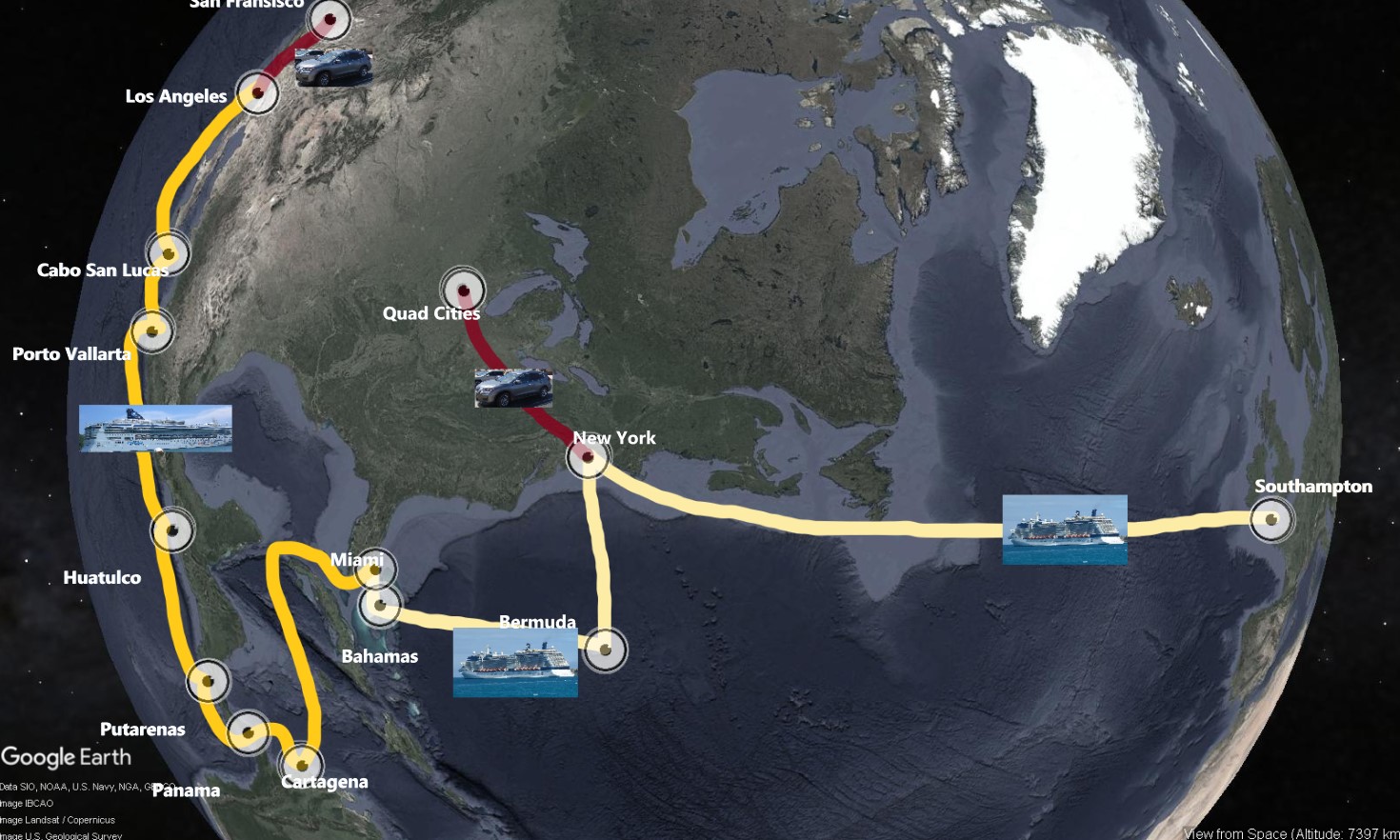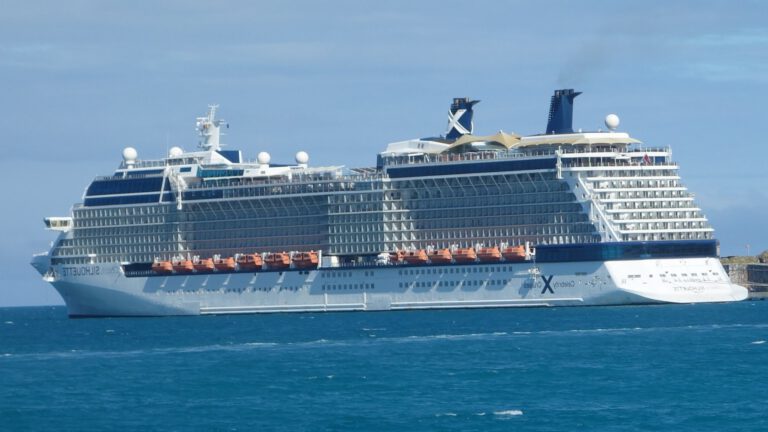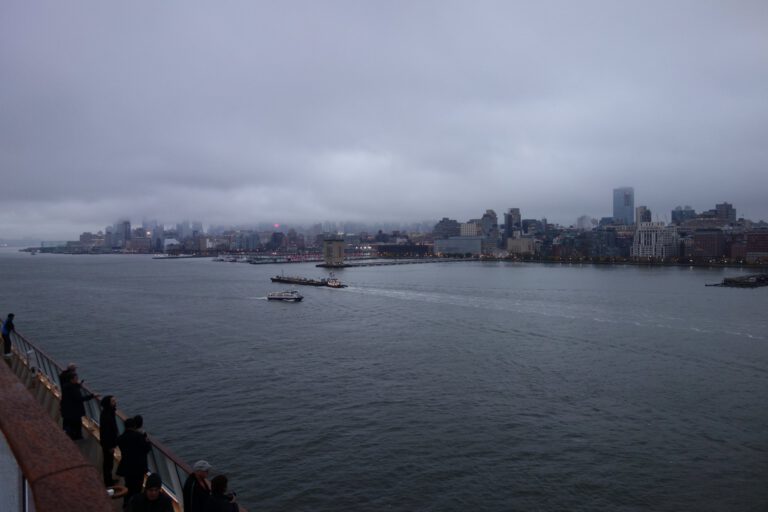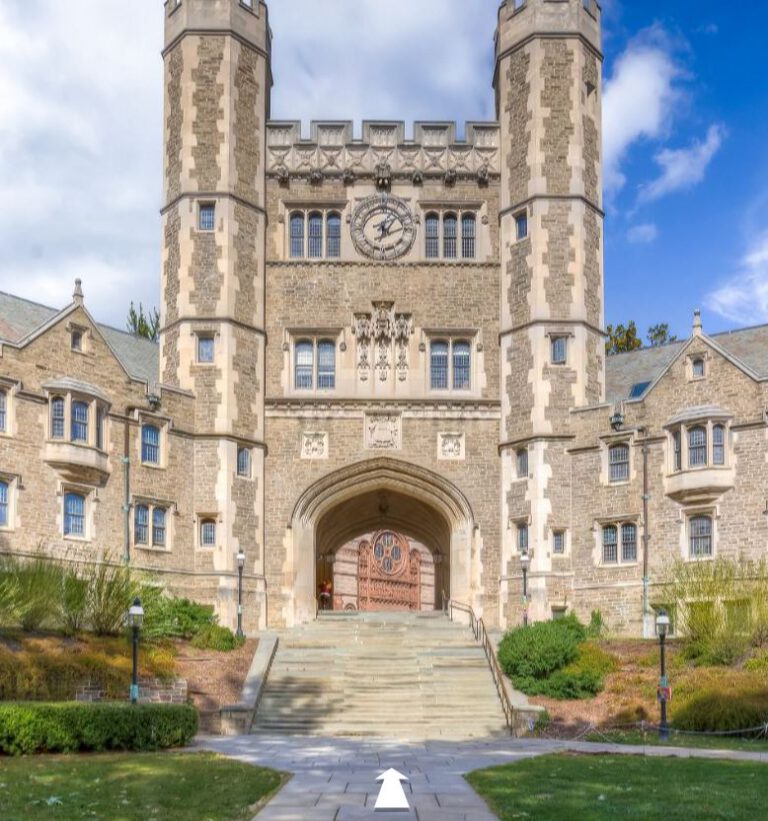Conclusion of this Virtual Trip
Trips
5. April 2021
Manfred Goschler

What can a virtual journey actually be?
Don’t some of the stories in books or films invite us on a journey of thought? As a rule, the course of action is specified, which we as consumers follow and can use our imagination to conceptually design the content. In a real journey, there are basically more degrees of freedom, although there, too, one often moves within a narrow framework, which is determined, for example, by the choice of a means of transport. This virtual journey would like to soften some boundaries and look for new options that leave space for activities and development.
When planning this project, I thought of a larger, approx. 8-week virtual trip, which consists of individual routes from actually experienced trips and which should be integrated into a logically coherent overall route. The schedule of these individual routes was largely adopted and the highlights of the places visited should be shown with the available images and videos. This basic structure should now be expanded to include additional fictional elements that are to be understood as virtual experiences. These experiences were, for example, virtual tours of museums and universities, virtual sightseeing flights, visits to websites, lectures on the Internet or films. In some places the boundaries between reality and fiction are now blurring due to the integration of such virtual experiences in a realistic time frame of the trip. In principle, this trip would have been feasible in the form shown.
During this trip, while visiting Hollywood with a detour to the film industry and a trip to the science fiction genre, I came across interesting films that further address the topic of virtuality (Link).
How did the idea come about?
With excursions or trips you always leave your own terrain of experiences and habits to a certain extent and confront yourself with the unknown. What is there beyond a hill, sea, or whatever horizon?
What can you do if you have to limit contacts for a long time due to the pandemic and have to avoid traveling as much as possible. Travel has always been a source of inspiration for me and I have tried to design it in such a way that on the one hand it offers variety through different activities, but also always leaves enough time for rest and relaxation. That applied to our tours as well as cruises. Although I can understand the criticism of cruises for many reasons, I was able to rate our cruises so far positively and associate them with the best memories. During the days at sea, these trips often gave me enough time to deal with smaller private ideas and projects that I would still like to continue today. They also offered the opportunity to get an impression of many foreign places, although I sometimes regretted that some shore excursions were too short.
That is why I was looking for a method to visit such places again, virtually, which may also open up new perspectives, since good information is now available on the Internet. The idea of continuing smaller projects and connecting them with travel destinations also stimulated this experiment. And there was another very important point that is based on a real journey. Flexibility: For example, you drive in a big city like New York and only then decide how to spend your limited time there. It was the same on this trip. In retrospect, the result was more than just making a virtue of hardship and escaping the isolated pandemic of everyday life. But one after the other.
Establishing the route
Because of the experiences of our travels, I already had a good idea of what it is like to be on a ship at sea for days or to travel for a few weeks through a country like California on a round trip. Based on this experience, determining the route was easy. I could best associate Silicon Valley as a travel destination with a vision, the rest was just a simple logical combination of the individual trips, which together lasted about 8 weeks. This period was also planned for this virtual trip.
How did this virtual journey go?
Originally, the background of our previous trips should be illuminated more intensely. For this purpose, known and experienced things should be presented in a compact form and supplemented with additional information that remained open during the trip or was of particular interest. However, this focus had shifted in the course of this virtual trip.
On the first stage, the transatlantic tour from Southampton to New York, I had dealt with the history of such voyages and often thought of people who, as emigrants, emigrated on such journeys under completely different circumstances. Including famous people, such as a very well-known physicist who traveled from Europe to New York in order to find a new place of work in nearby Princeton. In addition to Einstein, there were other points of interest for making a “virtual” trip to Princeton. The good impression left by this place and the university (Link) led me to take a look at the teaching and research institutions there at the next stage destination, Boston (Link). A wide range of appealing online courses from Harvard University actually persuaded me to go to school again for a little re-entry into IT and physics, instead of using the cultural online offers of this interesting city during this time and on further virtual tours of discovery to go.
Fortunately, I had a travel plan that I could continue to follow, otherwise the offer at Harvard would have taken over me even more. So it went on on the virtual journey, and I put together virtual travel stages on a weekly basis. Sometimes it was almost like saying goodbye like in a real trip: on the one hand you regret traveling on, on the other hand you are looking forward to your next destination.
Special Experiences and Points of Interest (POI) in Retrospect
POI1) Mobility: Tourist boat trips now and in the past
POI 2) Learning: Virtual trips to universities and museums with online lectures
POI 3) Projects in the project: IT technology, image, video and web processing, IT development environments with virtual machines.
POI 4) High-Tech in Art: Hollywood as a synonym for the film industry as a link to the science fiction genre with an
emphasis on modern machines and virtuality.
POI 5) High-tech in reality: Silicon Valley in sunny California. History and development of IT technology with modern machines
such as computers, robots, programs and virtuality. World-famous companies and universities that have been involved
in this development (see e.g. the HAI Institute at Standford University)
POI 6) Ethical questions in connection with high-tech (still open)
The bottom line was that my personal expectations were exceeded because I was able to gain a lot of new experiences and came a little closer to some of my personal goals. And mostly had fun doing it. I can also imagine such a virtual trip for certain goals as a kind of project plan that can be individually and balanced. The mapping of locations to topics and the sections to durations, as well as the inclusion of the familiar and the new things, ensure variety and maintain mental freshness and thus motivation. My previous vacation memories were summarized, learned something about image, video and web processing and also found new points of interest with which I will continue. There will therefore be further virtual excursions or trips, at least as long as the restrictions of the pandemic still exist, or if, for example, a real trip is difficult to realize for other reasons. I am thinking, for example, of a trip to Mars, which is most likely beyond my means for time and financial reasons. Or should you ask Elon Musk what the chances are? As an alternative to visiting space, you could also take a virtual trip to the dwarfs, i.e. the microcosm. I still see some options here.
Next Steps
Further expansion of the points of interes, especially in relation to AI
- Overview of the AI topics and research priorities based on some teaching and research institutes (picture of networking)
- How can we imagine our future with modern machines / AI



